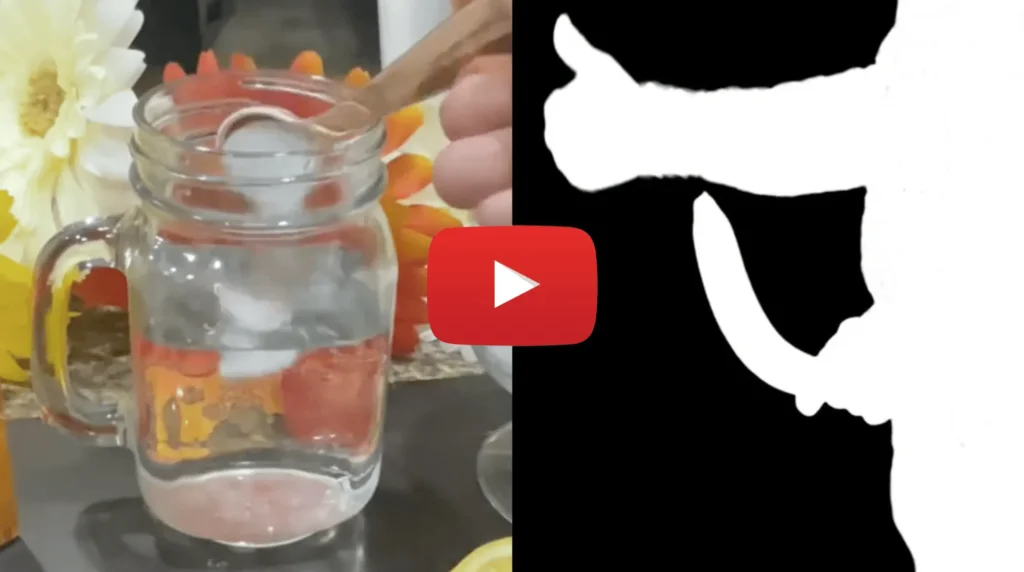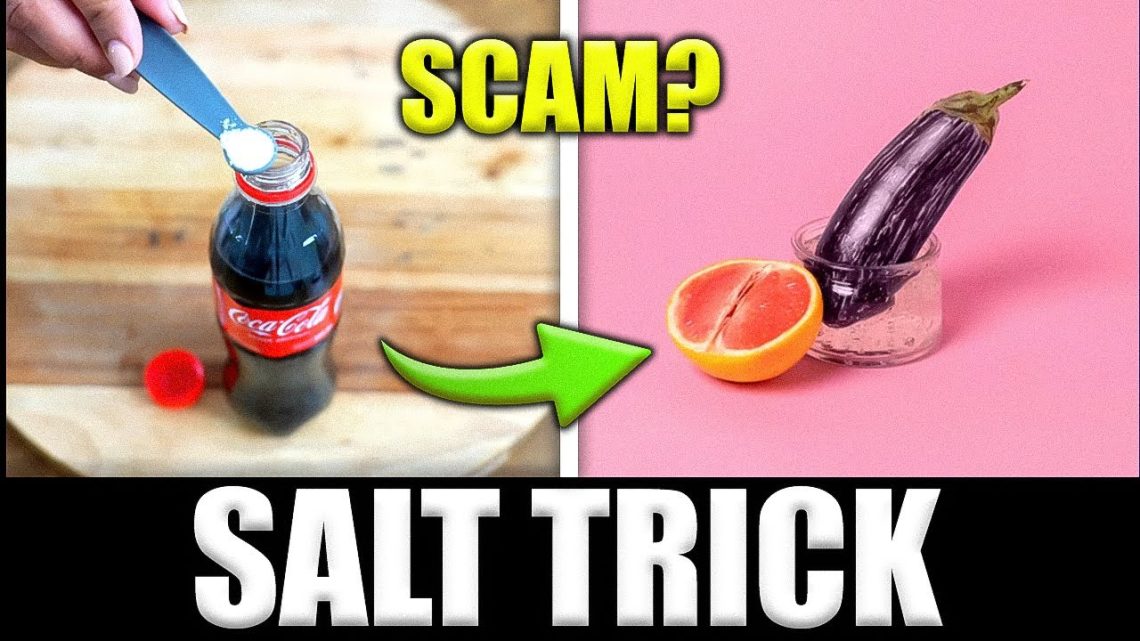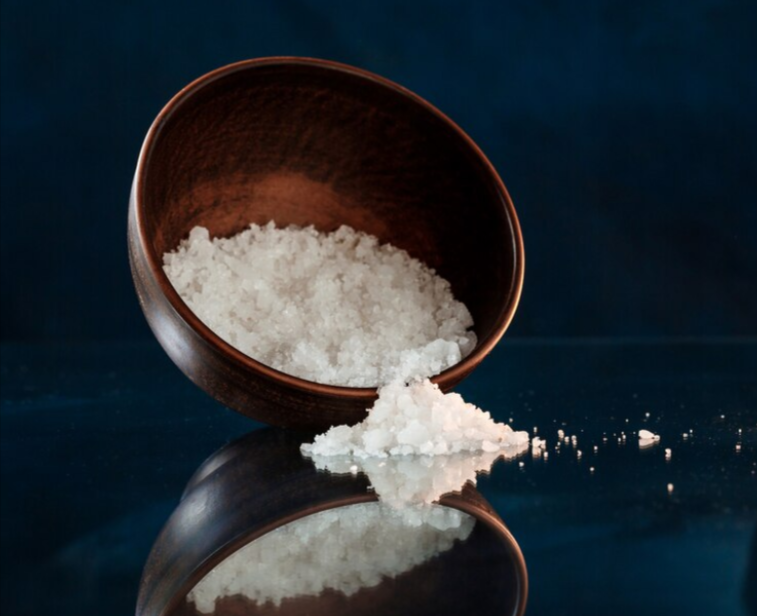Have you ever heard of the salt trick and wondered if it's legit? Well, buckle up because we’re diving deep into this phenomenon that's been making waves online. From TikTok trends to kitchen hacks, the salt trick has sparked curiosity and debate. But is it all it’s cracked up to be? Let's find out!
You know how it goes—someone posts a video claiming they’ve discovered the ultimate life hack, and suddenly everyone's talking about it. The salt trick is one of those viral sensations that’s got people scratching their heads. Some swear by its effectiveness, while others are skeptical. So, what exactly is this salt trick everyone's raving about?
In this article, we’ll break it down for you step by step, exploring what the salt trick is, whether it actually works, and the science behind it. Whether you’re a skeptic or a believer, we’ve got the answers you’re looking for. Let’s get started!
Read also:Building Strong Friendships A Guide To Lasting Connections
Here’s a quick rundown of what we’ll cover:
- What is the Salt Trick?
- History of the Salt Trick
- Does It Really Work?
- The Science Behind the Salt Trick
- Common Uses of the Salt Trick
- Benefits and Risks
- Expert Opinions
- How to Perform the Salt Trick
- Alternatives to the Salt Trick
- Conclusion
What is the Salt Trick?
Alright, let’s start with the basics. The salt trick refers to various methods where salt is used as a solution to everyday problems. From removing stains to cleaning surfaces, the salt trick has been touted as a versatile hack. But what makes it so special?
Origins of the Salt Trick
The origins of the salt trick can be traced back to ancient times when people relied on natural remedies. Salt, being a readily available resource, was often used for its abrasive and absorbent properties. Over time, these practices evolved into what we now know as the salt trick.
Why Salt?
Salt isn’t just a seasoning; it’s a powerhouse of properties. Its ability to absorb moisture, act as a mild abrasive, and even kill bacteria makes it a go-to ingredient for many household tasks. But is it really as effective as people claim?
History of the Salt Trick
The history of the salt trick is fascinating. For centuries, people have used salt in creative ways to solve problems. From preserving food to treating wounds, salt has played a crucial role in human history. Let’s take a closer look at how the salt trick has evolved over time.
Ancient Uses of Salt
In ancient civilizations, salt was more than just a seasoning. It was a valuable commodity used for trading, preserving food, and even as currency. The Romans, for example, paid their soldiers in salt, which is where the word "salary" comes from. But it wasn’t just about food—salt was also used for cleaning and healing.
Read also:Unveiling The Secrets Of Hidden Gems Your Ultimate Guide To Discovering What Lies Beneath
Modern-Day Applications
Fast forward to today, and the salt trick has taken on a new life. With the rise of social media, videos showcasing the salt trick have gone viral, sparking interest and curiosity. From removing rust to cleaning grout, the possibilities seem endless.
Does It Really Work?
This is the million-dollar question, isn’t it? Does the salt trick actually work, or is it just another internet hoax? The answer lies in the specific application. While some uses of the salt trick are backed by science, others might be more myth than reality.
Proven Uses
There are several proven uses of the salt trick. For instance, using salt to remove stains from clothes or clean silverware has been shown to work. The abrasive nature of salt helps break down dirt and grime, making it an effective cleaning agent.
Unproven Claims
On the other hand, some claims about the salt trick are less convincing. For example, using salt to whiten teeth or remove stubborn stains might not yield the desired results. It’s important to approach these claims with a critical eye and do your research.
The Science Behind the Salt Trick
So, what’s the science behind the salt trick? To understand why it works—or doesn’t work—we need to delve into the properties of salt. Salt is composed of sodium and chloride ions, which give it its unique characteristics.
Absorbent Properties
Salt’s ability to absorb moisture is one of its key features. This makes it ideal for tasks like removing stains or drying out wet surfaces. When salt comes into contact with moisture, it absorbs it, helping to lift dirt and grime.
Abrasive Nature
Salt is also mildly abrasive, which makes it effective for scrubbing surfaces. Its coarse texture helps break down tough stains and grime, making it a popular choice for cleaning.
Common Uses of the Salt Trick
Now that we’ve covered the science, let’s talk about some common uses of the salt trick. Here are a few examples:
- Cleaning silverware: Mix salt with water to create a paste and scrub away tarnish.
- Removing stains: Sprinkle salt on spills to absorb liquids and prevent stains from setting.
- De-icing: Use salt to melt ice on driveways and sidewalks.
- Exfoliating: Create a DIY salt scrub for soft, smooth skin.
These are just a few examples of how the salt trick can be applied in everyday life.
Benefits and Risks
Like any household hack, the salt trick comes with its own set of benefits and risks. Let’s weigh the pros and cons.
Benefits
The benefits of the salt trick are numerous. It’s cost-effective, environmentally friendly, and versatile. Plus, salt is readily available in most households, making it a convenient solution for many problems.
Risks
However, there are some risks to consider. Using too much salt can damage surfaces or irritate skin. Additionally, some claims about the salt trick might not be supported by science, so it’s important to proceed with caution.
Expert Opinions
What do the experts have to say about the salt trick? We reached out to several professionals to get their take on this popular trend.
Chemists
Chemists generally agree that the salt trick is effective for certain applications. They emphasize the importance of understanding the science behind it to ensure safe and effective use.
Home Cleaning Experts
Home cleaning experts rave about the versatility of the salt trick. They recommend using it for tasks like cleaning grout and removing stains but caution against overuse, which can damage surfaces.
How to Perform the Salt Trick
Ready to try the salt trick for yourself? Here’s a step-by-step guide to performing some common salt tricks:
Removing Stains
Step 1: Sprinkle salt generously over the stain.
Step 2: Let it sit for a few minutes to absorb the liquid.
Step 3: Rinse with water and wash as usual.
Cleaning Silverware
Step 1: Mix salt with water to create a paste.
Step 2: Rub the paste onto the silverware using a soft cloth.
Step 3: Rinse thoroughly and dry with a clean towel.
Alternatives to the Salt Trick
If you’re not a fan of the salt trick, there are plenty of alternatives to consider. Baking soda, vinegar, and lemon juice are all effective cleaning agents that can be used in place of salt. Each has its own unique properties and benefits, so it’s worth experimenting to see what works best for you.
Conclusion
So, is the salt trick real? The answer is yes and no. While some uses of the salt trick are backed by science, others might not be as effective as claimed. It’s important to approach this trend with a critical mindset and do your research before jumping in.
In conclusion, the salt trick is a versatile and cost-effective solution for many household problems. From cleaning to stain removal, it has a wide range of applications. However, it’s crucial to use it responsibly and be aware of the potential risks.
We’d love to hear your thoughts! Have you tried the salt trick? What’s your favorite use for it? Leave a comment below and let us know. And don’t forget to share this article with your friends and family. Together, let’s spread the word about the amazing power of salt!


